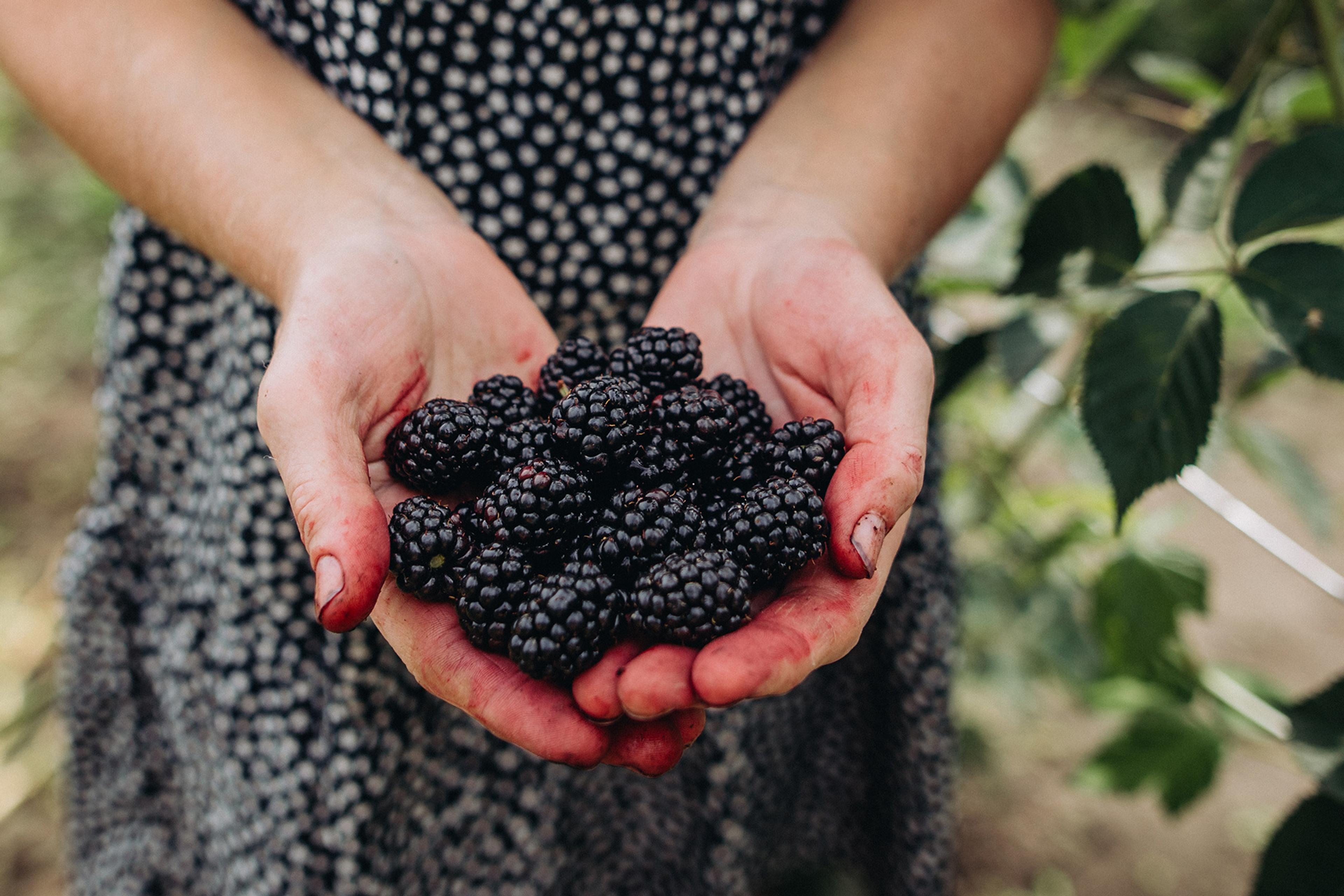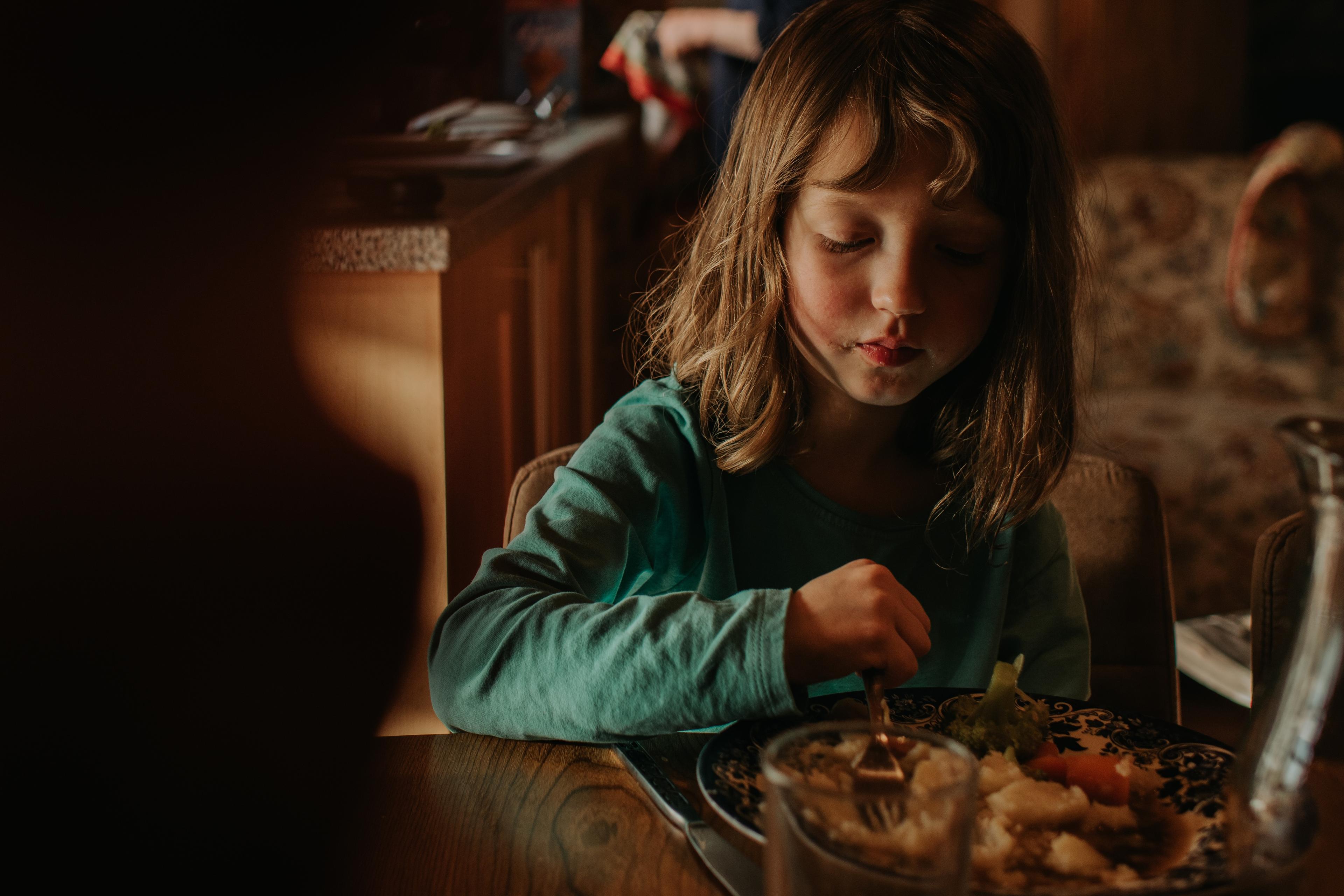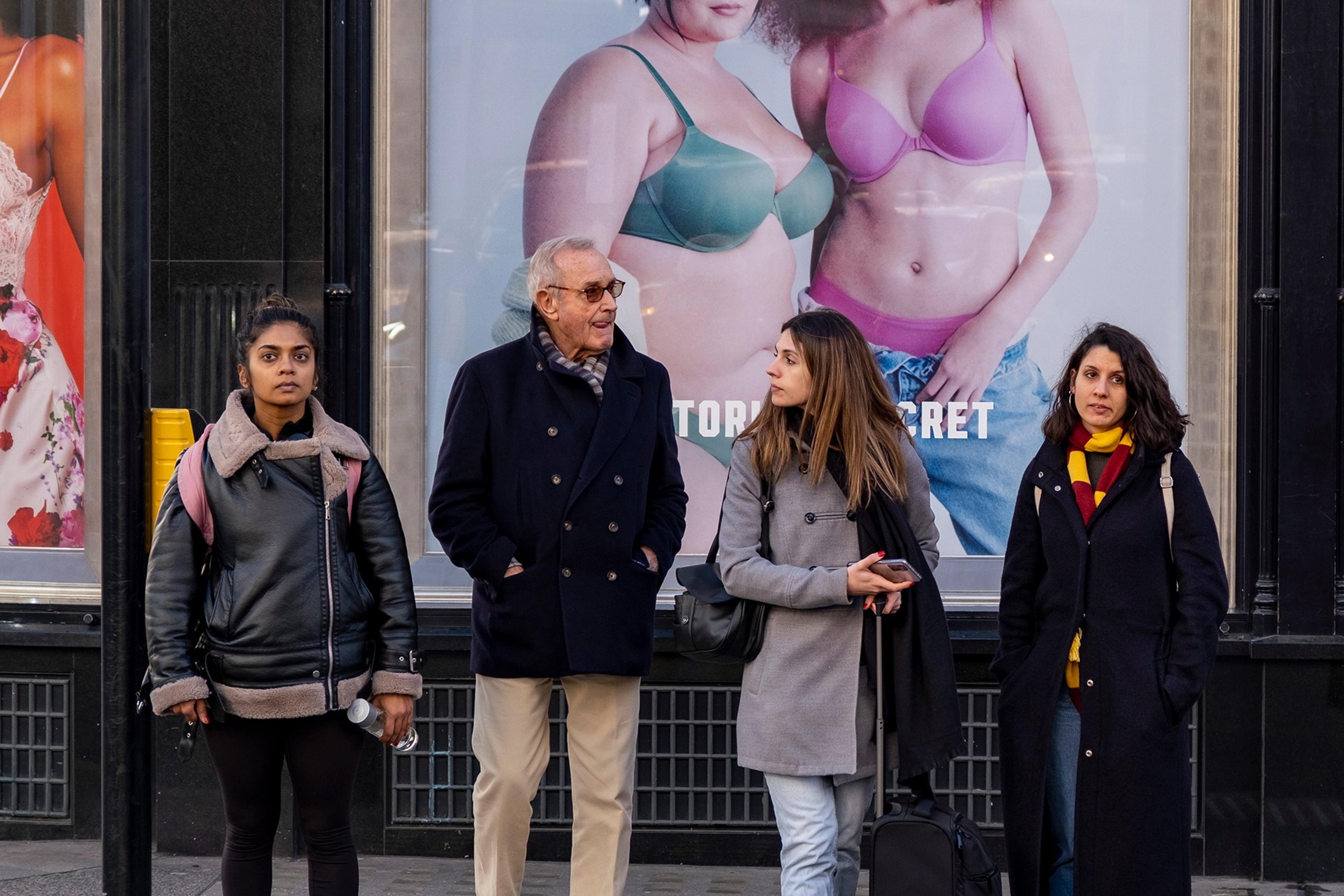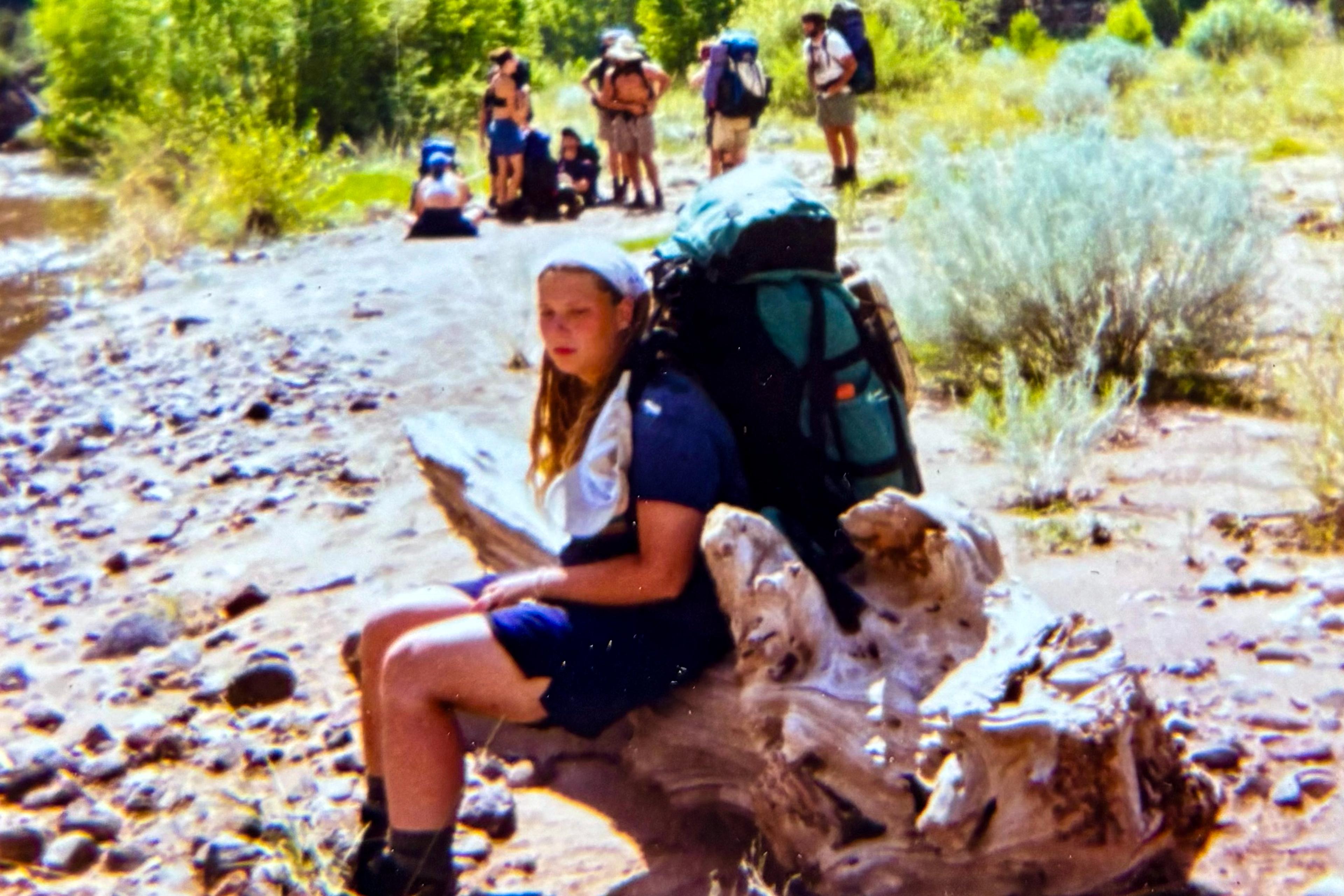The first time I cried in the middle of a workout, I wasn’t sad – I was finally in my body. It happened in a Solidcore class, a high-intensity, low-impact strength workout using a reformer, a sliding platform with springs that add resistance, making every movement slower and harder. I was doing a plank sequence – holding my body straight like the top of a push-up, then moving through slow, gruelling variations – when my limbs started to tremble. ‘This is where the real work begins,’ my instructor said and, for once, I didn’t flee. Shaking, burning, breathing. That moment, raw and unspectacular, broke a lifelong pattern of abandoning myself when things got hard.
Before strength training, I lived in my head, spinning with ADHD noise, low self-esteem, and a model’s insecurity about how others saw me. I had a dream body, but it lived in my head, as a fantasy. I was naturally slim and tall, but prone to bloating and self-conscious of my hooked nose. I never imagined myself as a model. I didn’t feel beautiful. Not seeing people who looked like me in the media only deepened my self-doubt.
Growing up as a Bangladeshi Muslim, I wore shame like a second skin. Shame shaped how I dressed, how I socialised, and the space I allowed myself to take. My family and community told me to stay docile because my reputation was at stake. This meant ignoring mental health concerns like ADHD, considered disruptive. Movement that wasn’t soft or dainty was seen as unfeminine, even masculine. Women weren’t supposed to grunt, sweat or build muscle. Working out – especially with intensity – was seen as stripping away femininity, as though strength and softness couldn’t coexist. I internalised the belief that, to be desirable, I had to stay physically, emotionally and spiritually small.
In my late 20s, I was underweight – and celebrated for it. I unexpectedly began modelling, walking runways, shooting editorial campaigns, living the kind of model life that looks glossy from the outside. But I was always tired. I survived on Adderall and crashed hard when it wore off. My body was in a constant state of depletion – no fuel, no foundation, just adrenaline and aesthetics. On the outside, I still looked like a model. On the inside, I felt like an empty shell.
Grief made that gap even wider. After losing my father, I became detached from hunger, routine and my own internal cues. I didn’t know how to nourish myself. Without the Adderall, I was a zombie, and with the Adderall, I had no appetite. I had no way to manage the pain.
Eventually, my best friend Aimee intervened. In Toronto, where she lived, Aimee gifted me an ice plunge session – the kind of thing I would have once dismissed as pseudoscience. But something shifted. The moment I lowered myself into that freezing bath, I screamed. I felt everything. And then I breathed. Slower. Deeper. Soon, I felt warm. I emerged reborn. ‘I’m a baby again,’ I whispered, half-joking, half-serious. Aimee and I always say: ‘We’re mirrors.’ We met in college and have been inseparable ever since. She is the friend who gave me my first swim lesson, gently guiding me into the water off the Toronto Islands. She introduced me to therapy, to taking smart risks, to honouring my body’s signals instead of silencing them. Aimee loved me back to life.
After Toronto, back home in New York City, I decided to try strength training, not to sculpt myself into someone more lovable, but to rebuild the parts of me I had long neglected. In the dark of my first Solidcore class, I told the instructor I was new. The studio was dimly lit, and I could see only my own form in the mirror. Juan, the coach, guided me with quiet precision – adjusting my posture, reminding me to move with intention. I tried to rush through the movements, chasing speed, but he kept saying: ‘Slower is better.’ In the trembling, tear-streaked stillness of that class, I realised: I didn’t need to be smaller. I needed to be here. I needed to rebuild a home inside my body.
This was the dopamine I had been chasing all along, but in its purest form
At first, I hated how bad I was. I was intimidated by the other women – athletic, sculpted, sexy, serene. Unlike them, I couldn’t hold a plank for the life of me. I fumbled. I shook. I panicked. But, still, I kept showing up. One day, during a particularly challenging series targeting the oblique muscles, I heard Juan say: ‘The way you do this plank when you’re tired is how you do life when you’re tired.’ That cracked something open. It was never about doing it perfectly. It was about how I showed up when I had nothing left to give.
‘There’s this moment in strength training called second-stage muscle failure,’ Juan later told me. ‘It’s when your body starts to shake, and your brain has to decide – do you give up, or do you lean into it?’ I started to crave that moment, that edge. It was where the spiral softened. Where overstimulation gave way to presence. Where survival became strength. When everything else felt out of control – my ADHD, my grief, my sense of self – this was the one place where I could feel the chaos and not collapse under it. This was my prayer in motion.
After class, I walked home and felt something I hadn’t felt in a long time: proud. I was sober – no Adderall, no crash looming, just me and the quiet pulse of natural endorphins buzzing through my body. This was the dopamine I had been chasing all along, but in its purest form. Not a high, but a harmony. I didn’t need to escape my body – I needed to return to it.
First, it was my biceps. Tiny bumps appeared, almost shyly, like the stirring of muscle memories. Then came the curve of my hamstrings, the cut of my shoulders, the strength of my core. I marvelled at the way I had sculpted my body, for the first time. I’d flex and invite my friends to feel my muscles, and we’d laugh, proud together. What thrilled me wasn’t just the strength – it was that I had earned it through care, vulnerability and discipline. I’d tell all my friends about the art of moving slowly. I loved inspiring others to move, not for aesthetics, but as an act of devotion.
My belly, the soft pouch I used to criticise, was not a flaw. It was a living archive
Strength training was a practice. It required consuming enough protein for my muscles to grow, so I did. Egg whites, sweet potatoes, steak, avocado and lots of water. My body and my mind craved it. I created rituals that honoured my body’s cycles and my brain’s hunger for both structure and novelty. Strength training gave me a pulse my neurodivergent mind could dance with. I also began meditating and sleeping better.
I started learning more about my real body, beyond image and fantasy. I paid attention to its rhythms, becoming gentler with myself when I was premenstrual, honouring the shifts instead of resisting them. And, somewhere along the way, I began to trace my body not just through fitness, but through history. My belly, the soft pouch I used to criticise, was not a flaw. It was a living archive. I wondered if it came as a direct result of colonisation and inherited survival. The British Empire’s extractive rule – raising taxes, enforcing cruel policies like the ‘denial of rice’, and prioritising military needs over human lives – devastated Bengal, with millions of lives lost to artificial famines. That legacy may live in me. In the softness of my belly. In my people’s fight to survive. I started seeing my body not as something to fix, but as something sacred. A continuation of survival.
I also reframed modelling. Like playing sports, it was a performance under pressure. Models are athletes. We hold poses for hours, contort under hot lights, and perform intimacy on command. But now, for the first time, I was training for myself – not the gaze. This wasn’t about shrinking into an image. This was about expanding into my fullest form.
Strength training didn’t fix me – but it did anchor me. I was grounded in knowing I could rise to the challenge. You either show up, or you don’t. You either breathe through the discomfort, or you break. Like life, muscles grow through resistance. The moment you want to give up is often the exact moment you’re on the edge of transformation. And that shaky, uncomfortable, beautiful edge is where life begins.








